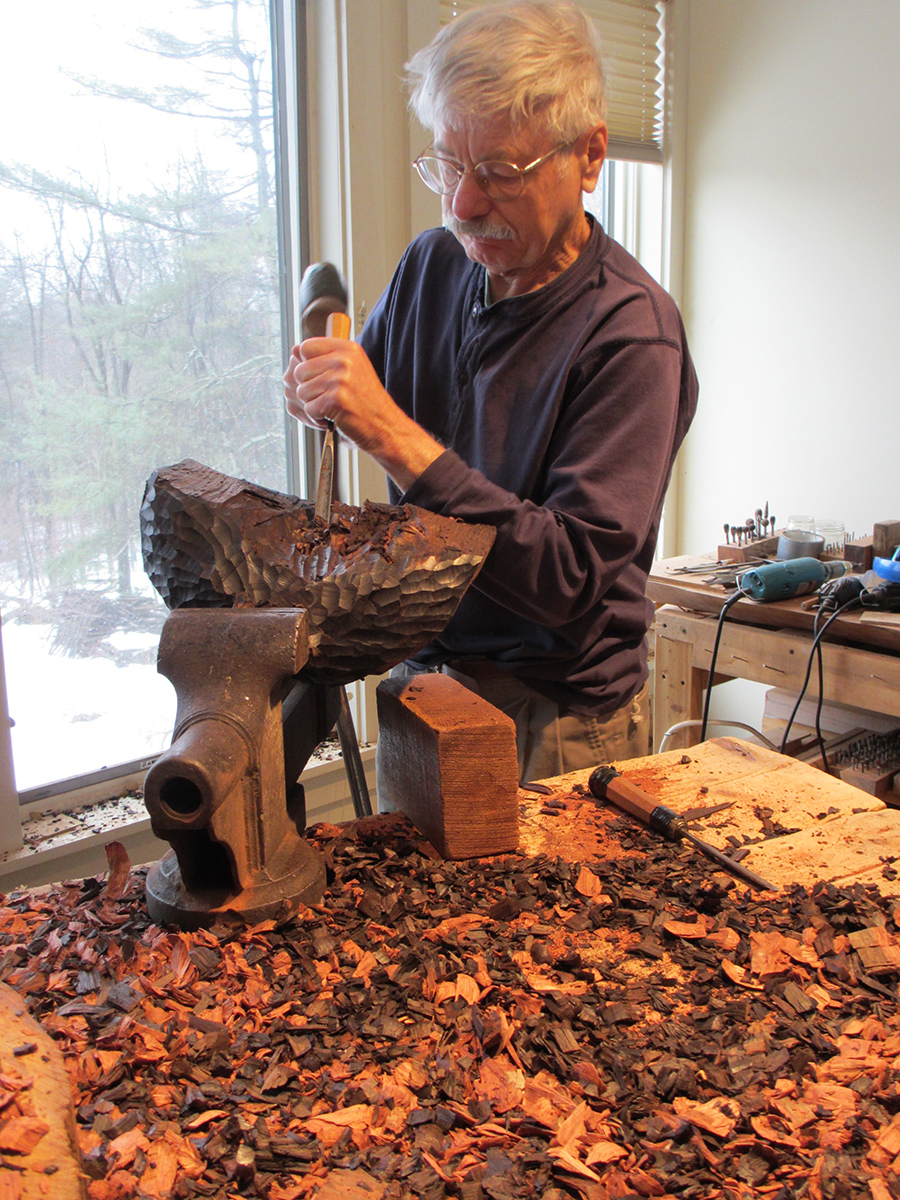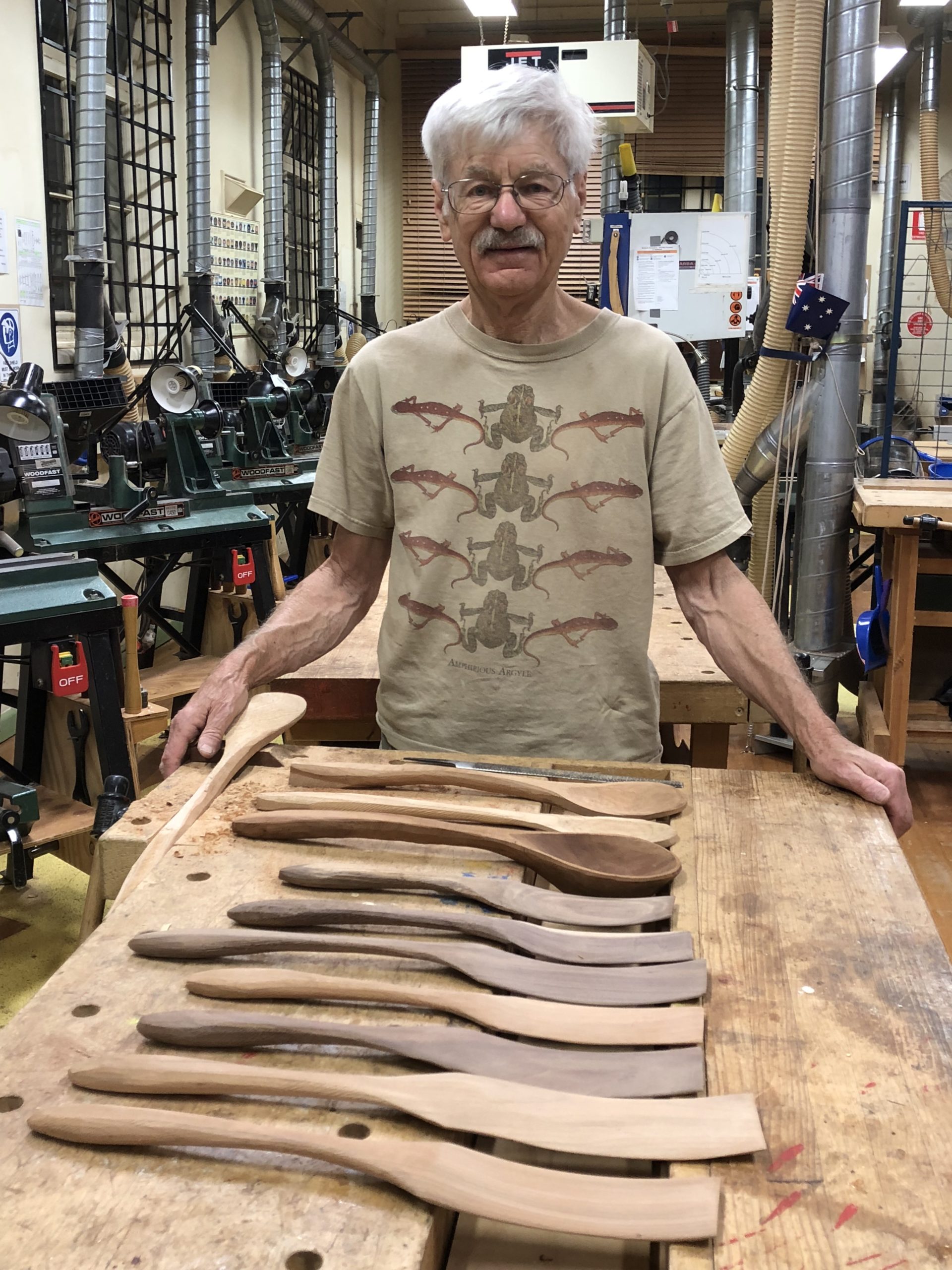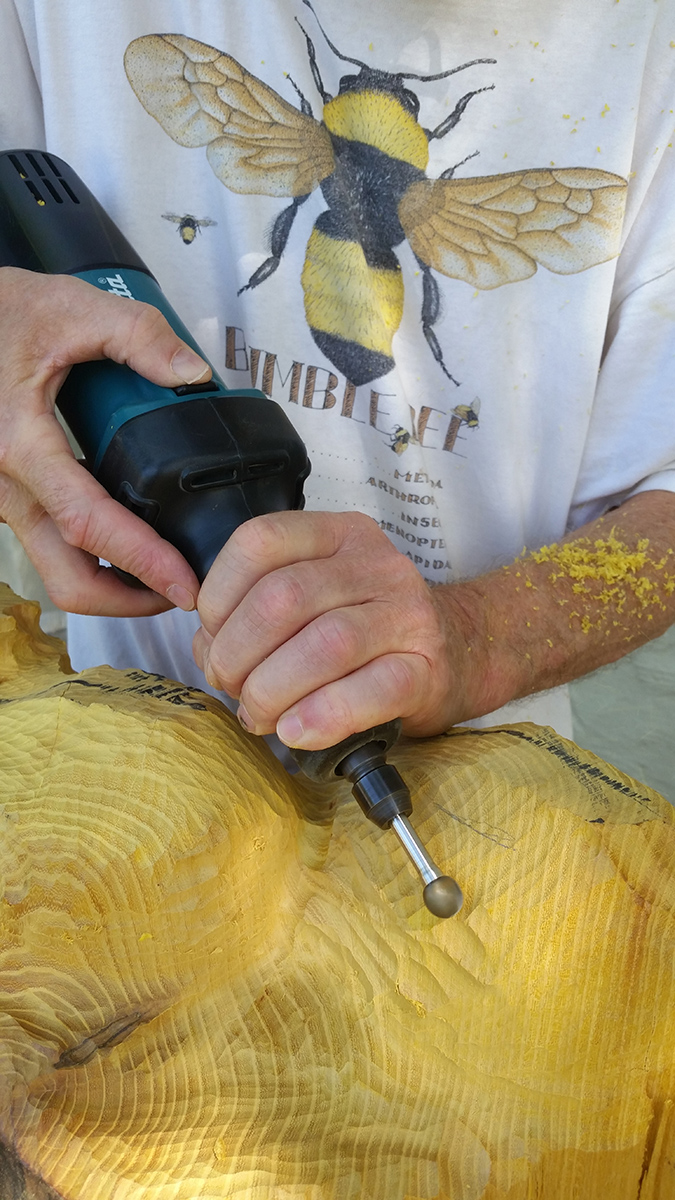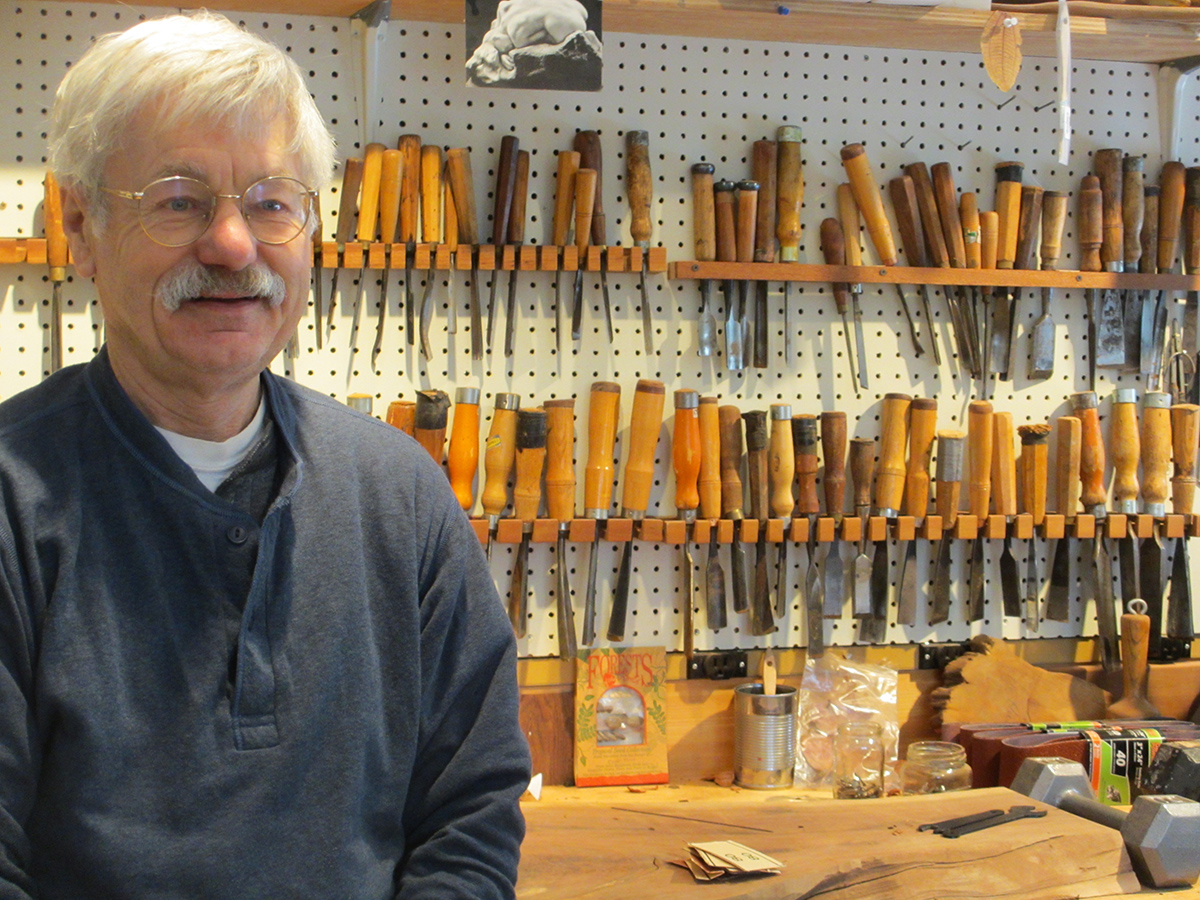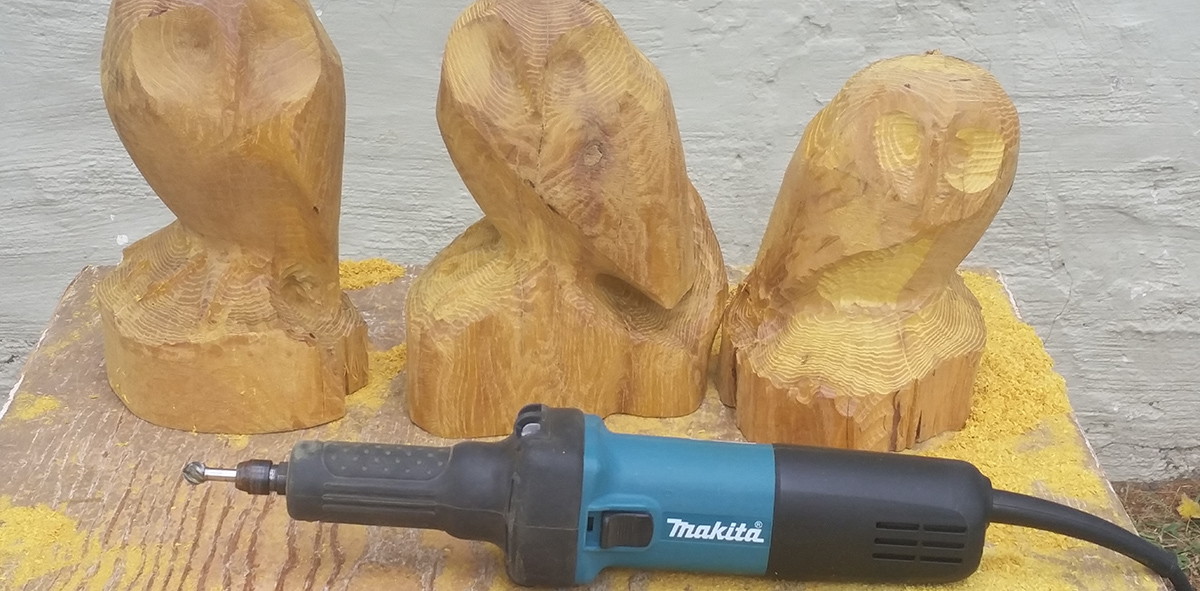SCULPTING…
Hank was born with the ability to think in three dimensions. When looking over logs and large pieces of wood he is able to visualize is able to the sculptural possibilities each piece of wood offers. Matching the wood’s color and grain pattern with the bird species is crucial for a successful design. He makes simple preliminary sketches to the size of the wood as a guide. Taking a flexible approach to roughing out the sculpture gives him the ability to take advantage of interesting grain patterns, and also the ability to work around cracks in the wood.
Hank uses a variety of hardwoods that he has acquired over the years. He is always on the lookout for high quality hardwood logs or large pieces of wood. For many years he had a large supply of Bubinga wood from Africa and Brazilian Rosewood to select from for his sculptures,
Each sculpture is from a contiguous piece of wood. Most of his sculptures are in either Brazilian Rosewood or African Bubinga wood. Black Walnut and Osage Orange are also use by Tyler with Osage Orange being the choice for his more recent sculptures of owls. It is a very hard wood with a strongly patterned grain which when first cut is lemon yellow oxidizing over time to a rich nut brown.
He works primarily by hand with chisels and Nicholson # 49 reaps. A chain saw is use cut the proper size of wood from a log. Then, hand chisel work with gouges slowly roughs out the initial shape. A variety of gouges are used to refine the shape. Occasionally, carbide cutting burs are used with a Makita die grinder to smooth surfaces, cut out feet, or cut under tails.
A Nicholson #49 rasp is use to smooth chisel cuts, as the final form and shape emerge. Sculptures take a remarkable step forward when smoothing the rough chisel mark surface by rasping – the bird’s final shape suddenly appears. Italian rifflers are used to cut form and smooth the head, bill, wing tips and feet.
The rounded forms of his works display the beauty of the grain of each wood type. Often, chisel-marked areas of the sculpture bases are used to create contrast with the flowing, smoothly polished forms of the bird or birds. The work is reductionist yet reflects the natural forms, proportions and behaviors of each type of bird.
Sculptures are sanded very fine to a final smoothness with # 400 or # 600 grit sandpaper, and finished with Tung oil to enhance the wood’s grain pattern and color. Hank’s style is realistic with a subtle abstract twist.
For many years Hank’s workshop routine has been to work a number of sculptures simultaneously. This allows him time to constantly review his progress and assess the design. Working carefully and slowly prevents cutting away too much wood too quickly. As he says, “once wood is cut away from a sculpture, it cannot be replaced.”
Now 76, Tyler usually has a dozen or more sculptures underway a one time – sandpipers, owls, spoons, spatulas and butter knives.



